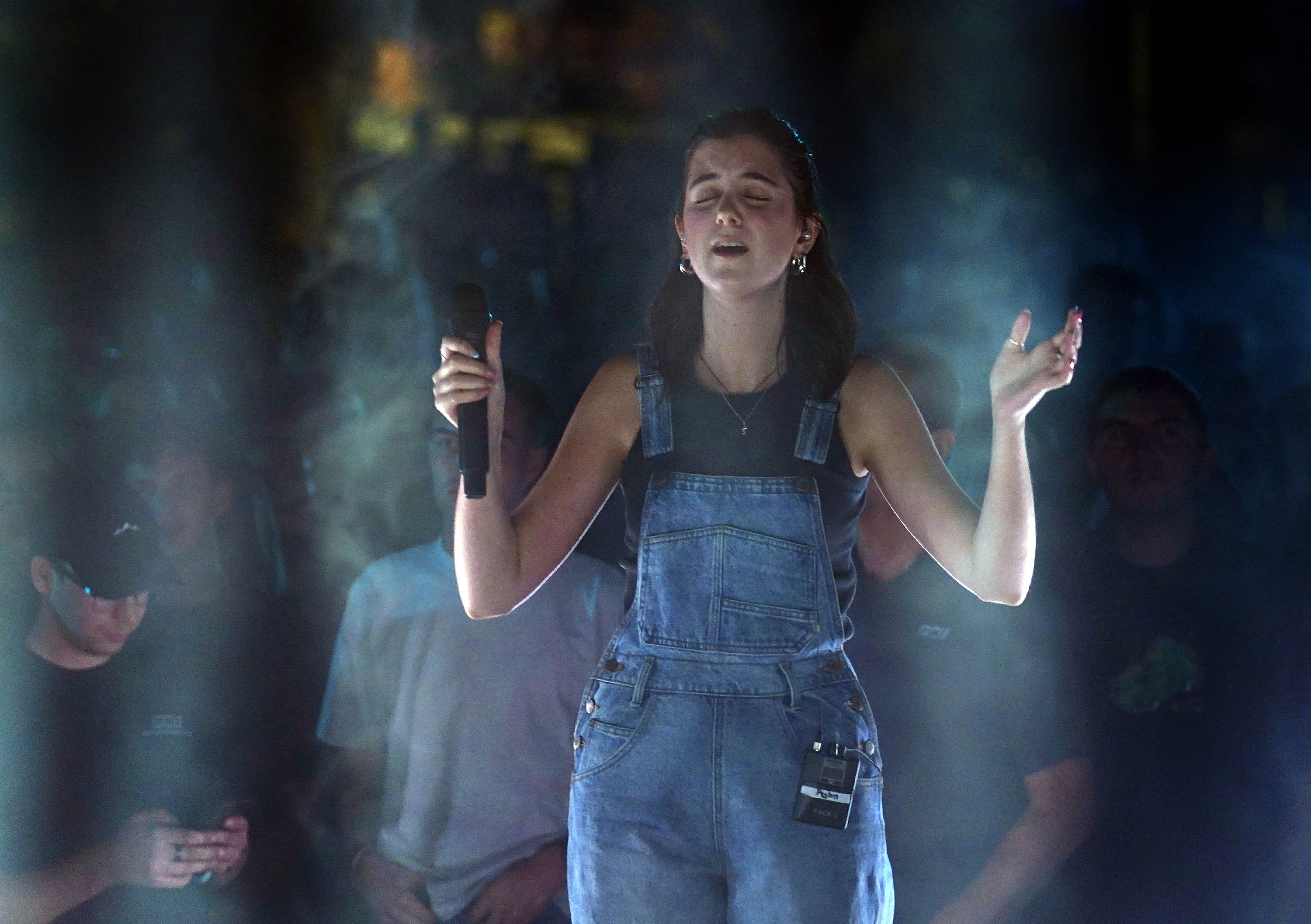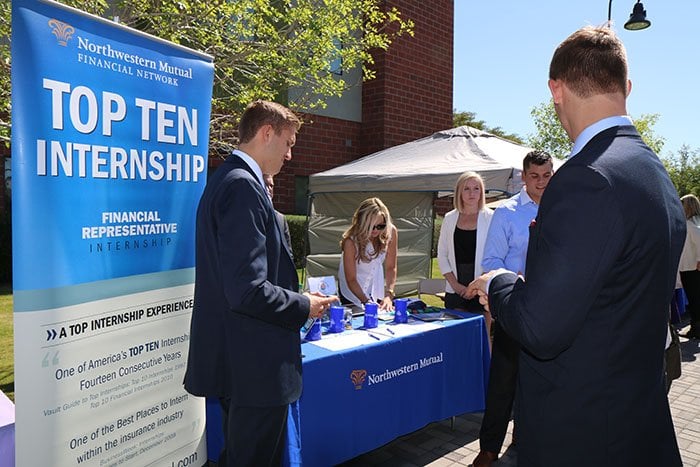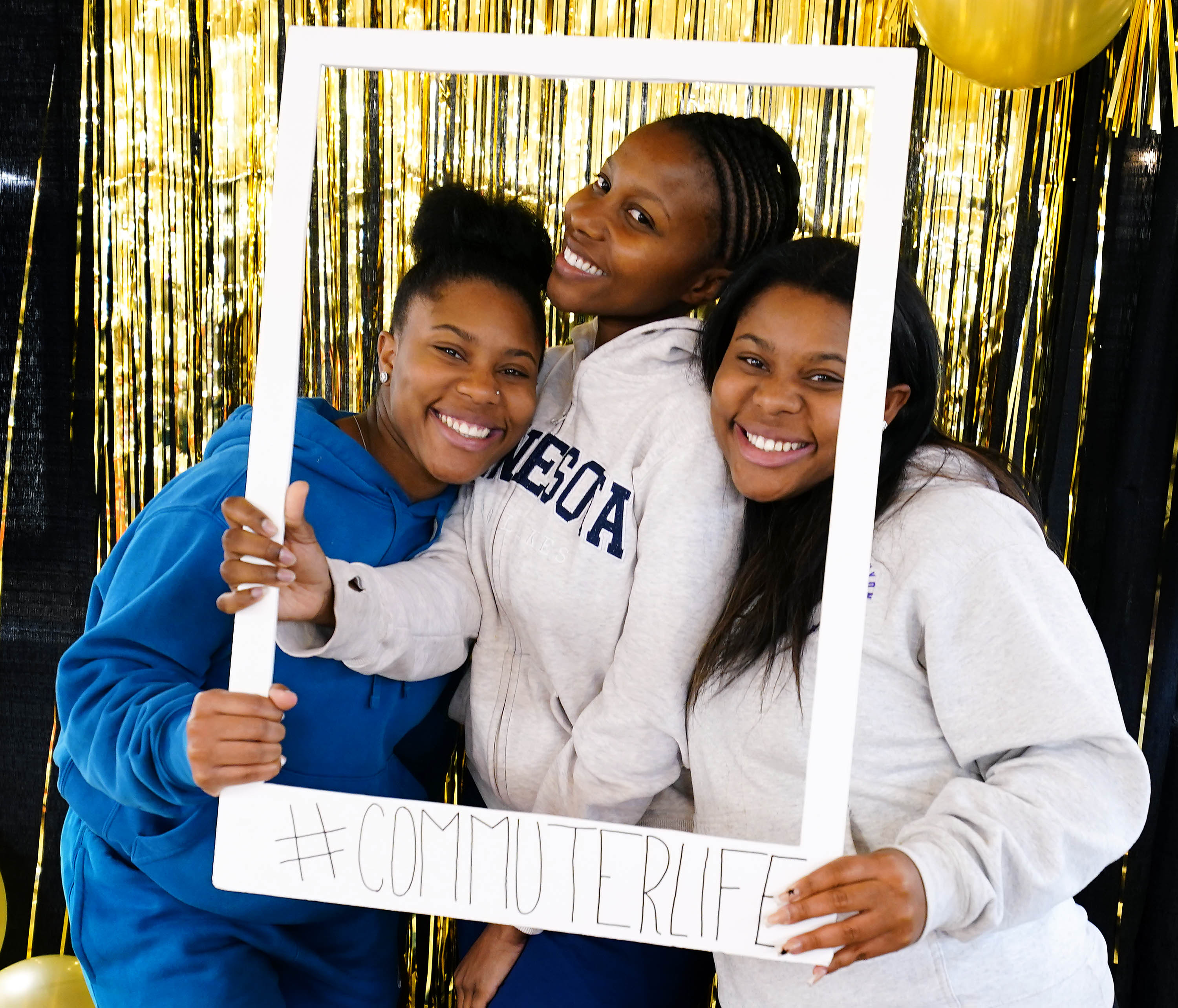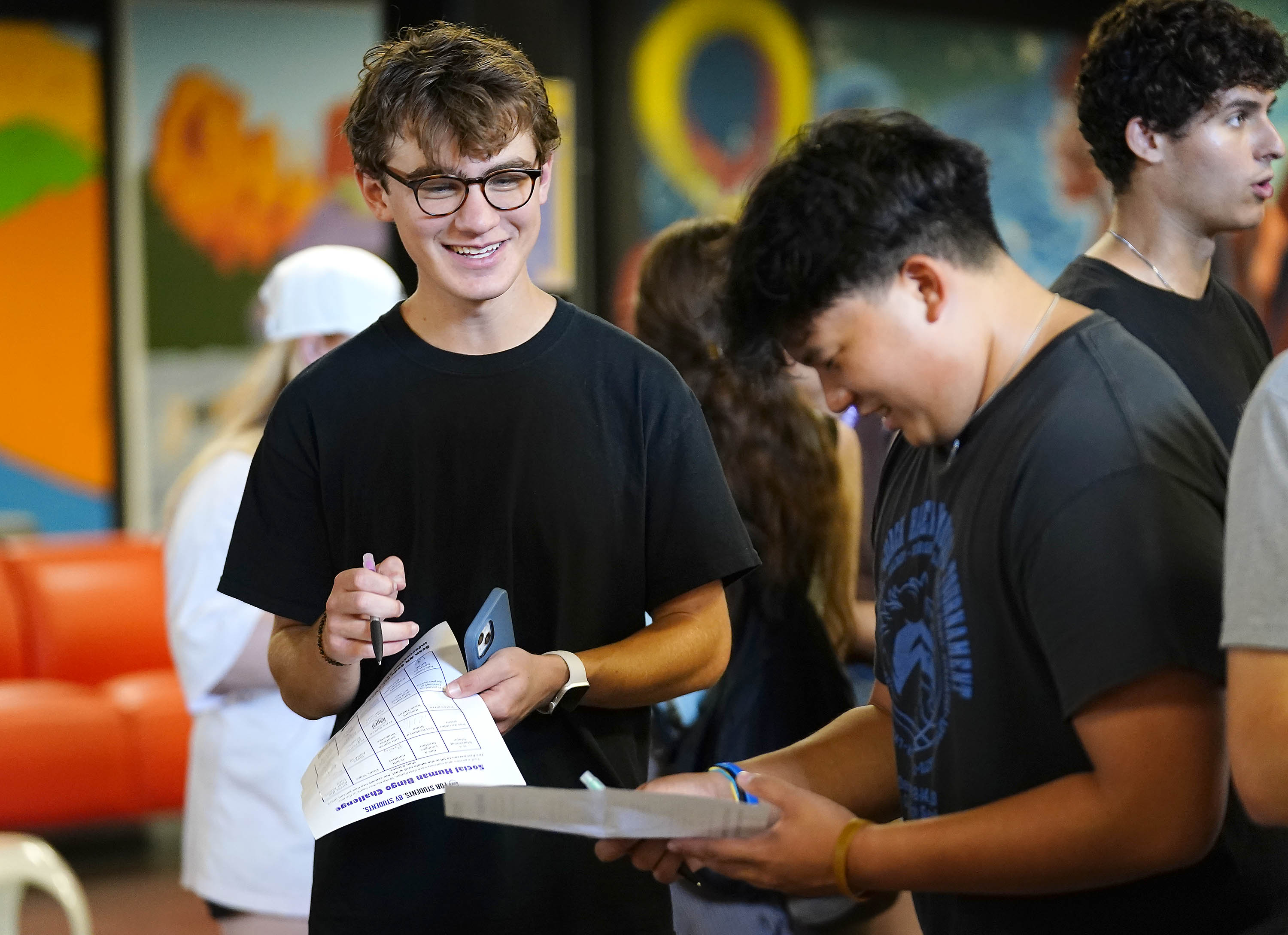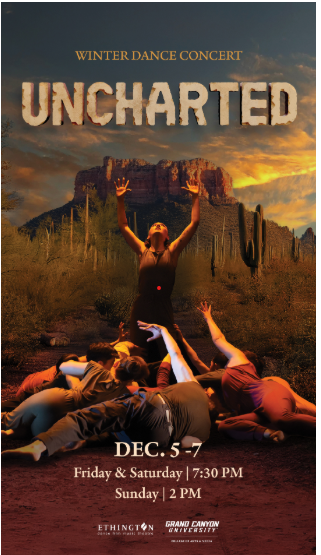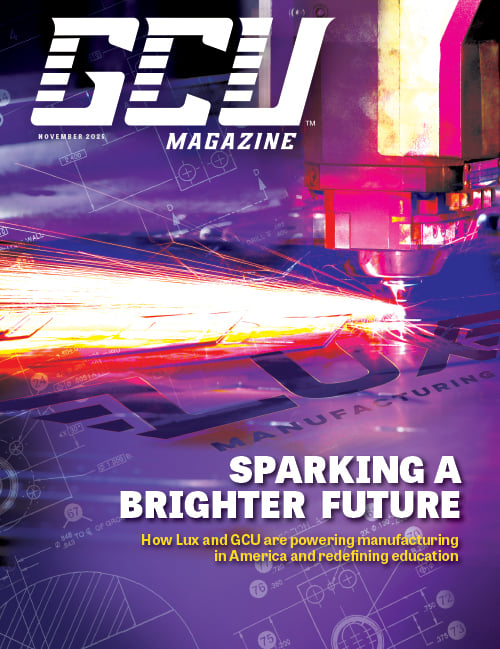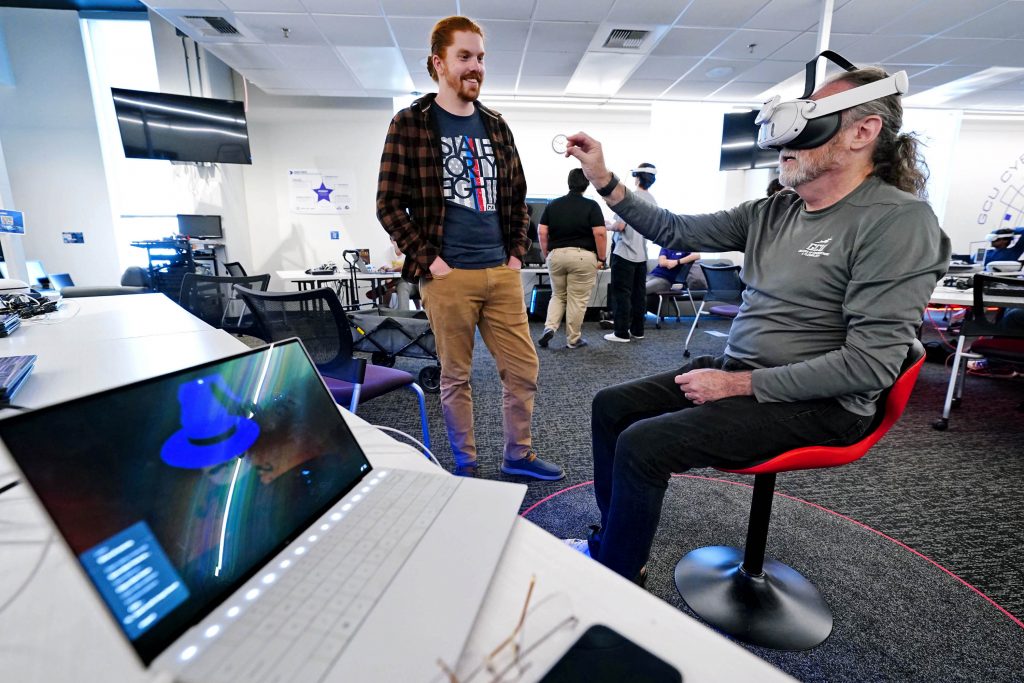
Photos by Ralph Freso
“I lost my hands!” declared Chloe Brandow, discombobulated and flabbergasted as she stretched both arms in front of her, reaching into the air and trying to grab onto something.
“Oh … this is TERRIFYING!” the Grand Canyon University computer science major declared, then found herself staring at a wizard that looks like a dementor from “Harry Potter.”
Brandow, sitting in a chair with funny, high-tech-looking soles strapped onto her shoes, rolled her feet back and forth on the ground, the chair slowly turning in a circle as she did.
“It looks like I’ve never used VR,” said Brandow, wearing a VR headset as she delved full force into “The Shattered Gear,” a virtual reality game created by junior software engineering student Mathew Hobson and sophomore computer science/game and simulation development student John Hickox in which players go on a quest to find each piece of a shattered gear that keeps the world in balance so it can be reassembled.
The game was part of Tuesday’s Virtual Reality Showcase at the Cyber Center of Excellence, which featured semester-ending projects completed by eight teams of students helmed by College of Engineering and Technology associate professor Dr. Isac Artzi.
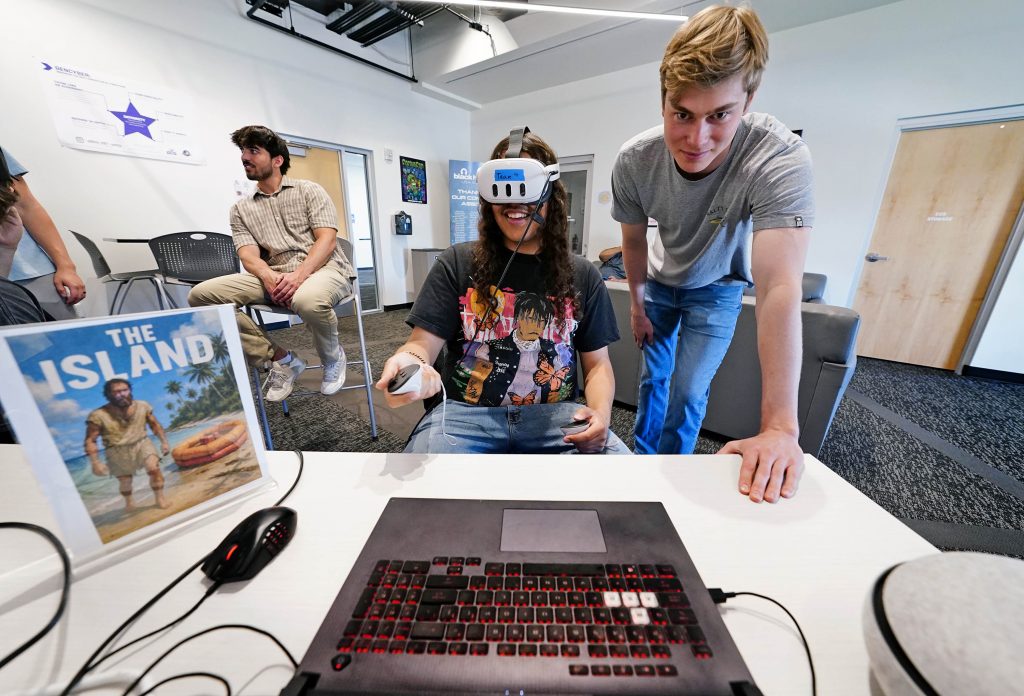
Although Brandow has played virtual reality games before, this was the first time she used Cybershoes, a VR locomotion device that translates real-world walking movements into in-game movements. It allows users who strap them onto their feet to walk inside a virtual reality world.
“They (the Cybershoes) were just available in the VR lab. … It was something different,” said Hobson, so he and Hickox incorporated the technology into “The Shattered Gear.” … “John figured it would be a great way to immerse yourself in the game more, to put more of a physical aspect into it.”
Not only did Hobson and Hickox switch it up with Cybershoes, but they also assimilated hand tracking into the game, which allows users to interact with it without using controllers. Sensors capture data on your hands – their position, orientation and the like – then hand-tracking software uses that data to create a real-time virtual embodiment of them.
Hobson said creating this game meant jumping into the deep end and learning something you knew zero about before taking the course.
“I have coding experience,” he said, though the game engine he and Hickox used is coded in the C# coding language, which he had never used before. “… But I’d never made a game before. So using a game engine to create a game was pretty new to me.”
For Hickox, the big challenge was optimization, or making sure the game runs smoothly, “because we were building it to the headset … we wanted to publish it to the headset.”
Despite having to build a game from scratch with no experience, Hickox was happy with the end result. He loved watching how the game updates finger positions and hand positions. “It’s very polished.”
Brandow agreed, “It’s really clean. It looks SO good.”
It was a strong end for the team, just two of the students in Artzi’s CST 320 Human-Computer Interaction course.
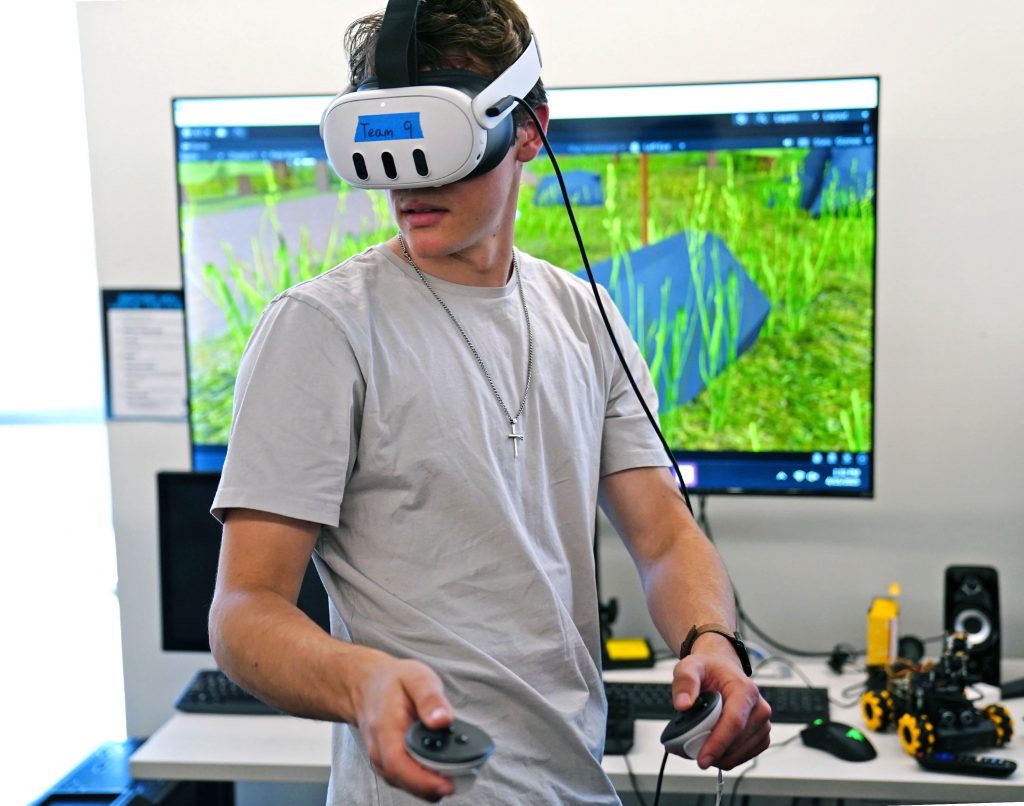
At the beginning of the semester, he charged students with creating a VR adventure game that takes players on an epic quest through various environments where they solve puzzles and collect items.
“Each component of the game aligns with a specific topic covered in the course,” said Artzi, who asked students to build their project using the Unity 3D game engine so that it can be played in VR on the Meta Quest 3 VR headset. “It allows students to integrate theoretical knowledge with practical application.”
They had to incorporate user interface aspects, as well as to throw a mentor into the game, too, and a guide.
It was the latest challenge for Artzi’s students, who in past classes have brought Bible stories to life, taught physics, and built an environment to help learners with neurodiversities succeed, all through VR.
Virtual reality at GCU has grown from just a few VR headsets to a whole VR lab. And Artzi’s Human-Computer Interaction course is now offered every semester, including summer, as well as online, and is part of a bigger domain: a minor in mixed reality, which includes VR and augmented reality classes.
The projects also are a harbinger of what’s to come – a bachelor’s degree in game development. Plans are for the program, which will be offered on ground and online, to start this summer.
But at the showcase, students already displayed what they could do with VR technology.
In addition to Hobson and Hickox’s “The Shattered Gear,” students laughed and cheered as another student immersed herself in adventure game “Little Guy and Me.”
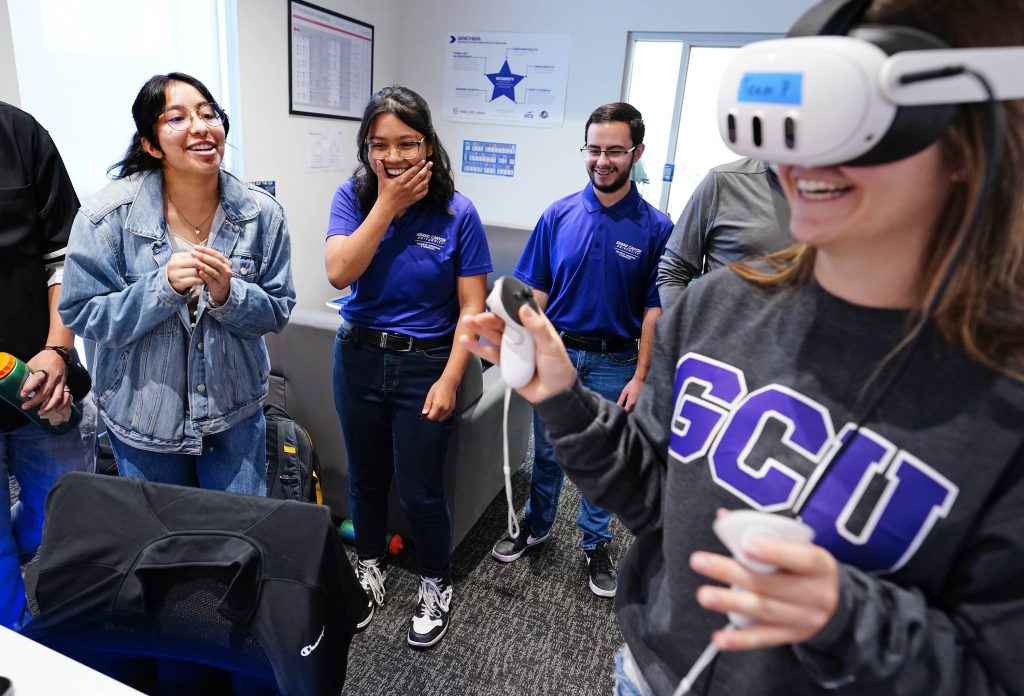
“I think our game is the coolest, but I’m a little bit biased,” said Ysabelle Trinidad, sophomore computer science major.
The objective, said teammate Stylianos Regas, a sophomore, is for the player and the titular little guy, a hamster named Mochi – he has been oppressed in his Chitterkin kingdom – are trying to break out of a dungeon, solving puzzles and sneaking past guards along the way.
But this game isn’t gloom and doom, despite the dungeon.
Mochi is just cute, chattering like crazy with his “Alvin and the Chipmunks”-like high pitched voice, thanks to voiceover work by fellow computer science major Iris Meneses, who will be taking Artzi’s Human-Computer Interaction Course next semester.
Part of the fun stemmed from students being able to hurl Mochi around to knock down guards, solve puzzles and the like, and it’s not as if Mochi’s being oppressed even more.
“He’s fine with it … as long as it’s for the revolution,” said Meneses with a smile.
In developing the game, team member Alberto Felix Castro had to sharpen his skills on GitHub, a web-based platform used to store, manage and share code.
“I worked a lot on one part and someone else worked on another part … I would go in and merge it,” said Castro, a junior studying computer science with an emphasis in game development.
Added Trinidad, “My team had a lot of experience beforehand with Unity, but VR was definitely a field that we never did before, so it was very hard for us to just get used to it.”
In “Goblin’s Quest,” software engineering junior Kieran Kuyper said his team wanted to go against the grain in creating their game’s hero.
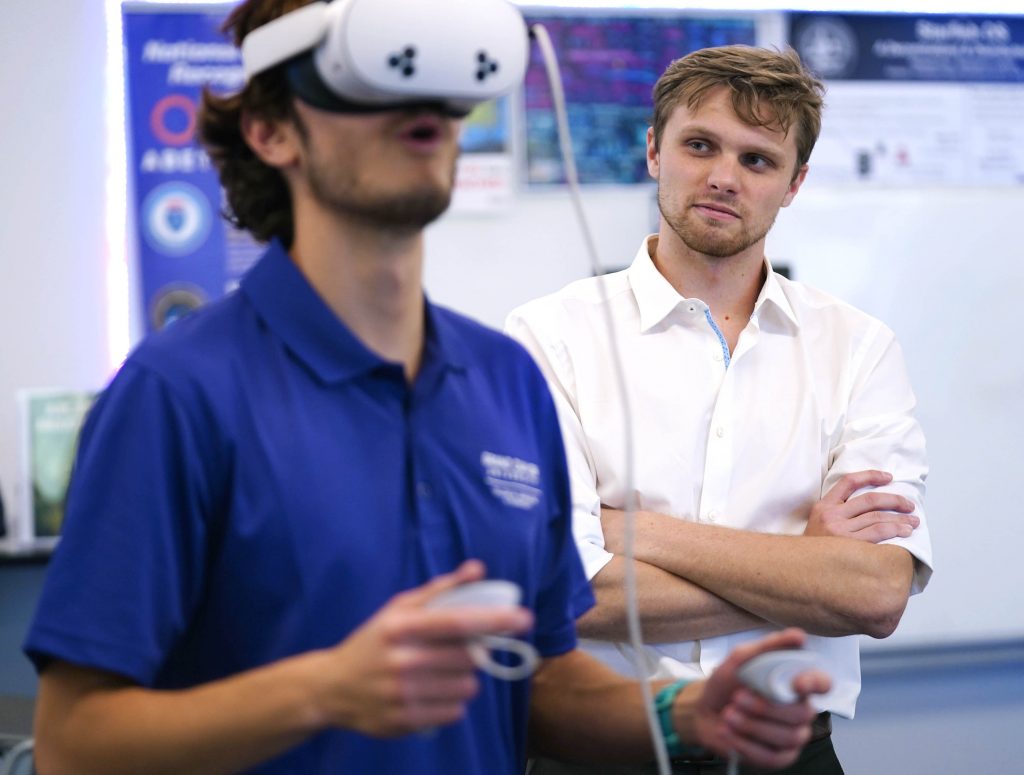
“I thought it would be funny if the hero would be a little guy,” he said, thus the goblin.
The learning curve?
“HUGE!” he said. “All three of us had never touched a game tool before. It was my first time using Unity.”
But magically, everything clicked the last month into building their game, just like Artzi told them it would.
“It’s fun being able to make your own game, honestly,” he said, despite the steep challenges, as he laughed while watching the wizard in his team’s game being defeated by a player and floating away like a leaf.
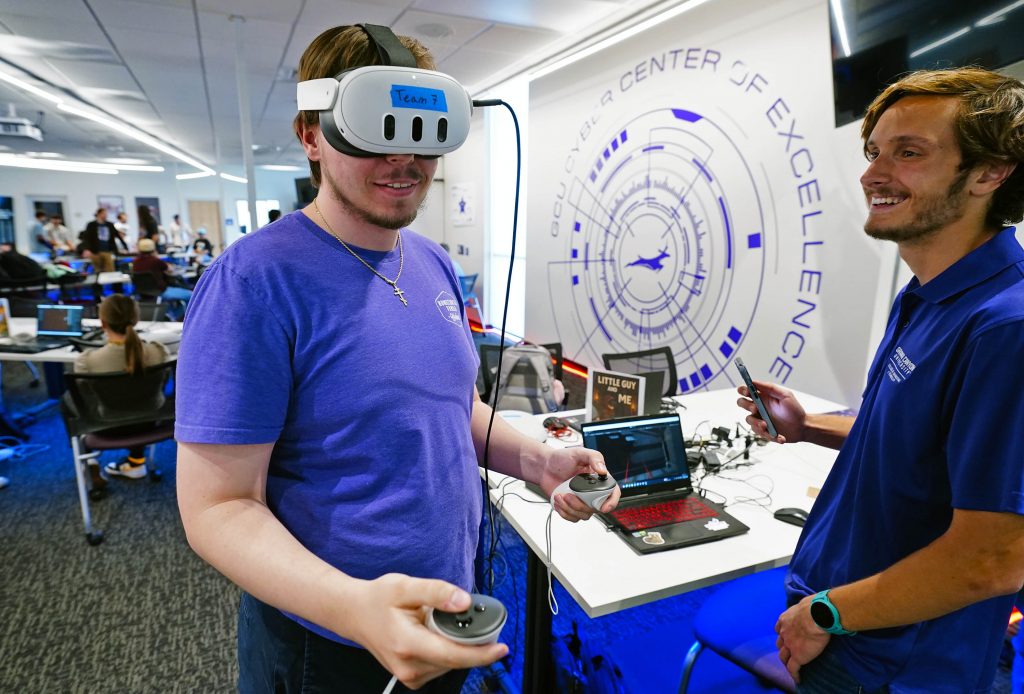
Then there was “GraviMax,” where bad guy Dr. Null has taken the force out of the world and players have to capture force crystals scattered over different parts of the planet.
Players were tickled by how incredibly fast a river in the game was flowing.
“One of the big things we struggled with was … VR compatibility issues,” and getting the hands to vibe in the game, said one of “GraviMax’s” creators, sophomore Josh Nelson, who’s studying computer science with an emphasis in big data analytics.
But the game’s unveiling turned out to be a joy.
Said Nelson, “I loved getting to see people try something that we’re finally getting to show off.”
Manager of Internal Communications Lana Sweeten-Shults can be reached at [email protected] or at 602-639-7901.
**
Related content:
GCU News: Students use VR, AR to plug in to helping those with neurodiversities
GCU News: Virtual reality gym, pirate ship projects a treasure




